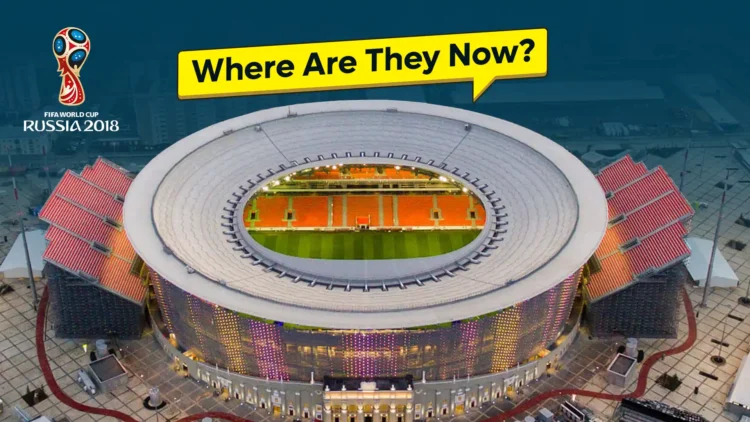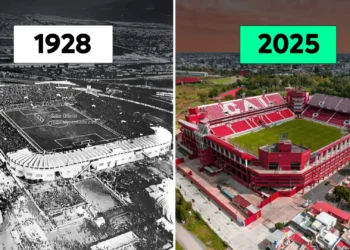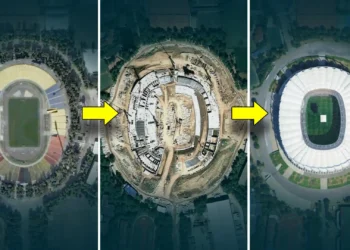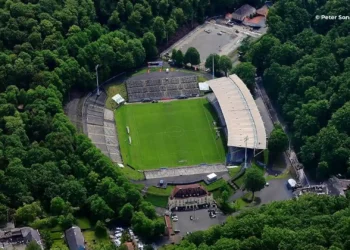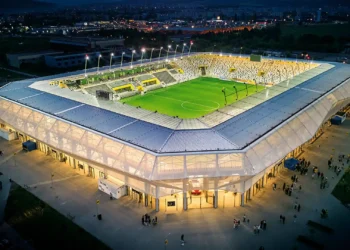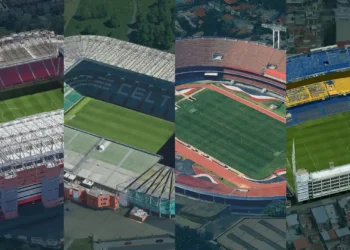When Russia hosted the 2018 FIFA World Cup, it built or renovated 12 stadiums across 11 cities. The tournament delivered stunning venues and new infrastructure, but what happened to those stadiums after the final whistle?
Seven years on, the story is mixed: some arenas thrive with regular club football and events, others struggle with costs and limited usage.
Key Takeaways
- All 12 venues earned green building certifications (nine under Russia’s RUSO standard, three under the international BREEAM).
- Most are maintained under Russia’s “heritage program”, with state subsidies helping cover operating costs.
- Success depends heavily on location, strong club tenants, and multi-event use.
Stadium-by-Stadium Breakdown
🏟️ Luzhniki Stadium (Moscow)
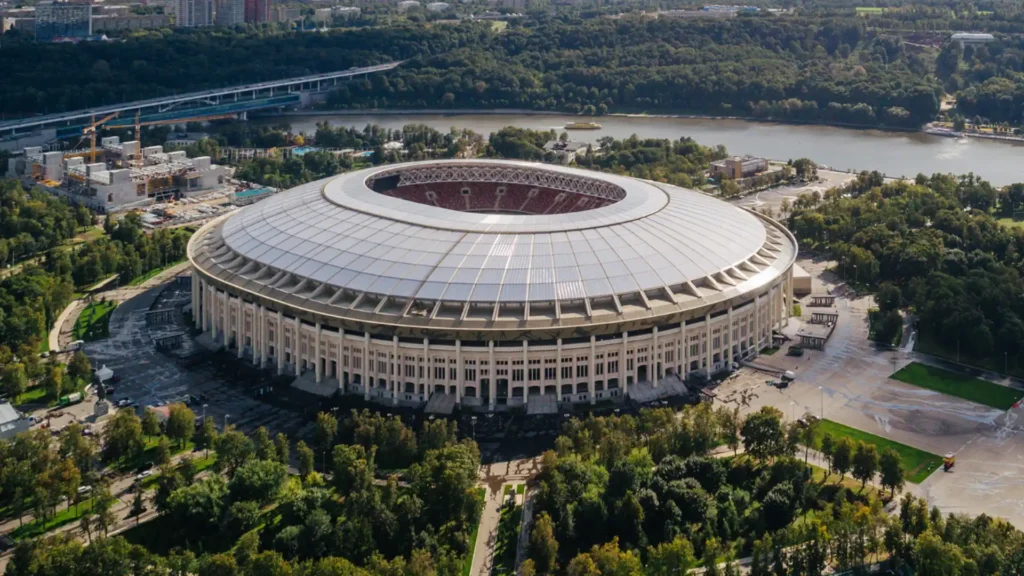
- Status: Thriving
- Home of Russia’s national team; host to major domestic and international finals.
- Central location and prestige make it the country’s football cathedral.
- Challenge: high maintenance costs for such a large venue.
🏟️ Spartak Stadium (Otkritie / Lukoil Arena, Moscow)
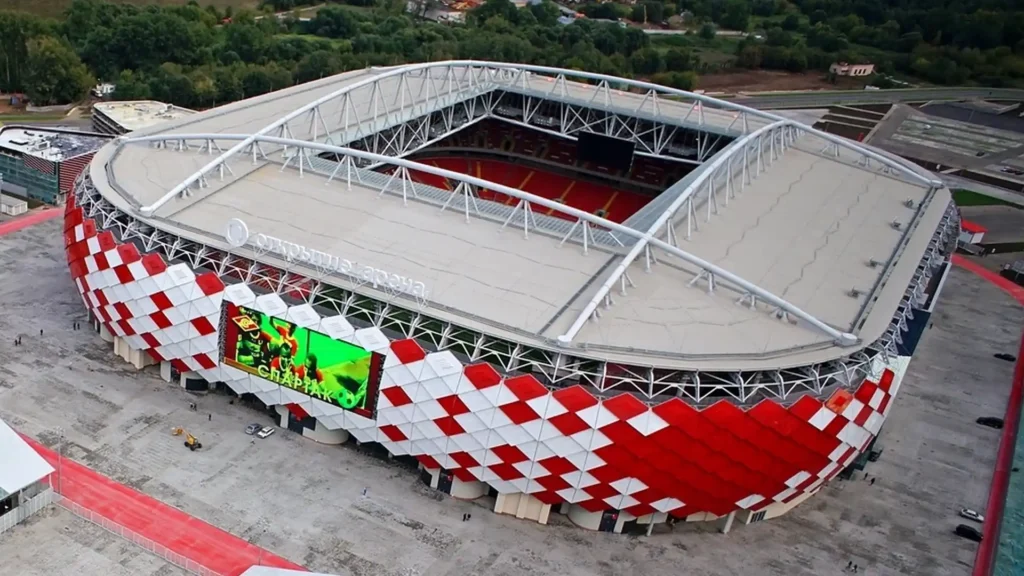
- Status: Thriving
- Home to FC Spartak Moscow.
- Regularly used for Russian Premier League and European matches.
- One of the most reliable legacies thanks to a strong club anchor.
🏟️ Saint Petersburg Stadium (Gazprom Arena)
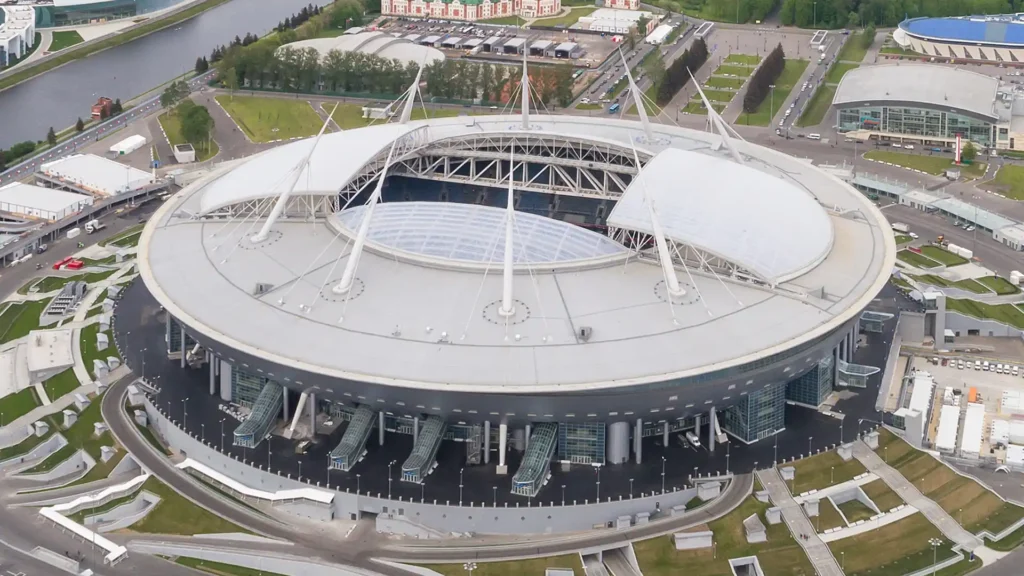
- Status: Thriving
- Home of FC Zenit; regularly full.
- Hosts concerts, national team matches, and European finals.
- A success story of 2018 legacy.
🏟️ Kazan Arena (Kazan)
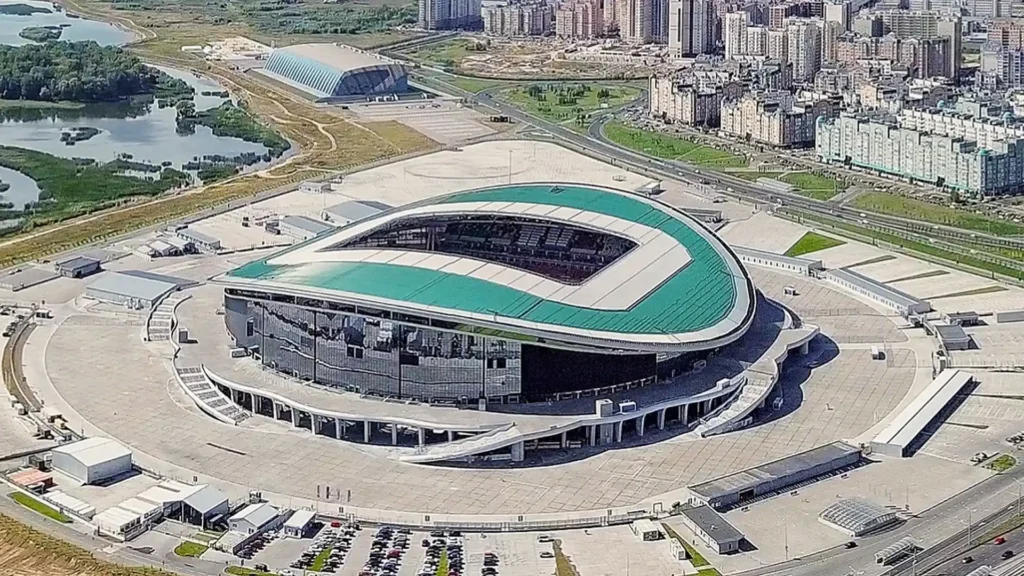
- Status: Active
- Home of Rubin Kazan.
- Frequently used for league matches, events, and even Universiade ceremonies.
- Sustainable due to strong city infrastructure.
🏟️ Rostov Arena (Rostov-on-Don)
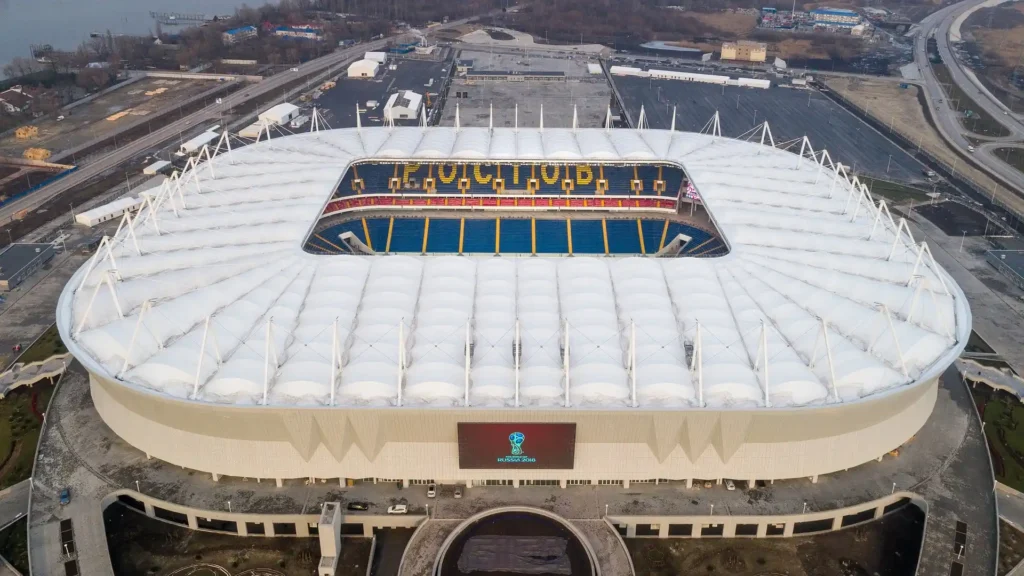
- Status: Active
- Home of FC Rostov.
- Regular football calendar, though attendances fluctuate.
🏟️ Nizhny Novgorod Stadium (Nizhny Novgorod)

- Status: Moderate
- Used by FC Pari Nizhny Novgorod.
- City continues to develop the area around the stadium, though filling capacity remains difficult.
🏟️ Volgograd Arena (Volgograd)
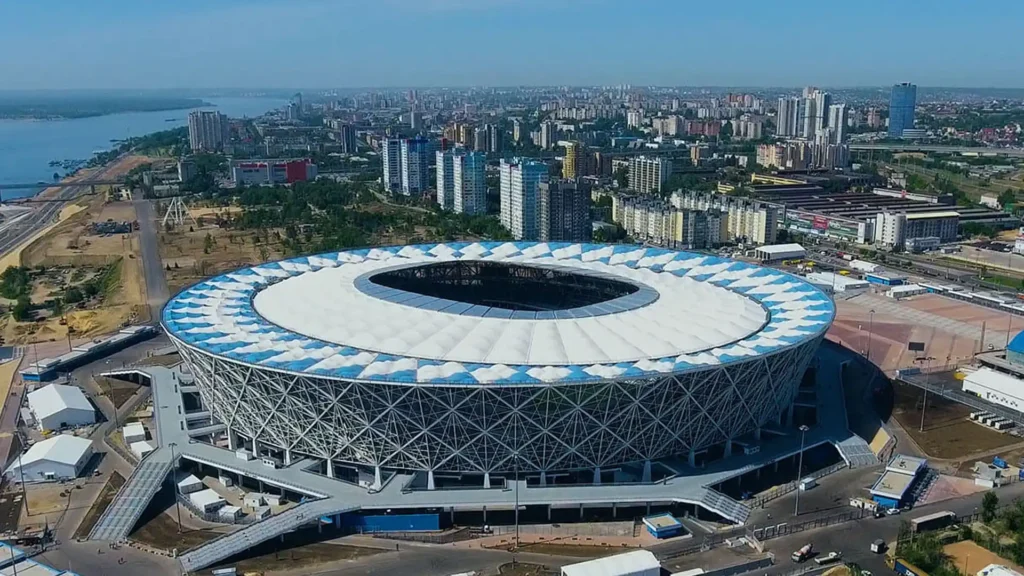
- Status: Moderate
- Home to FC Rotor Volgograd.
- Reasonably used, but struggles to justify its large size in a smaller market.
🏟️ Samara Arena (Solidarnost Arena)
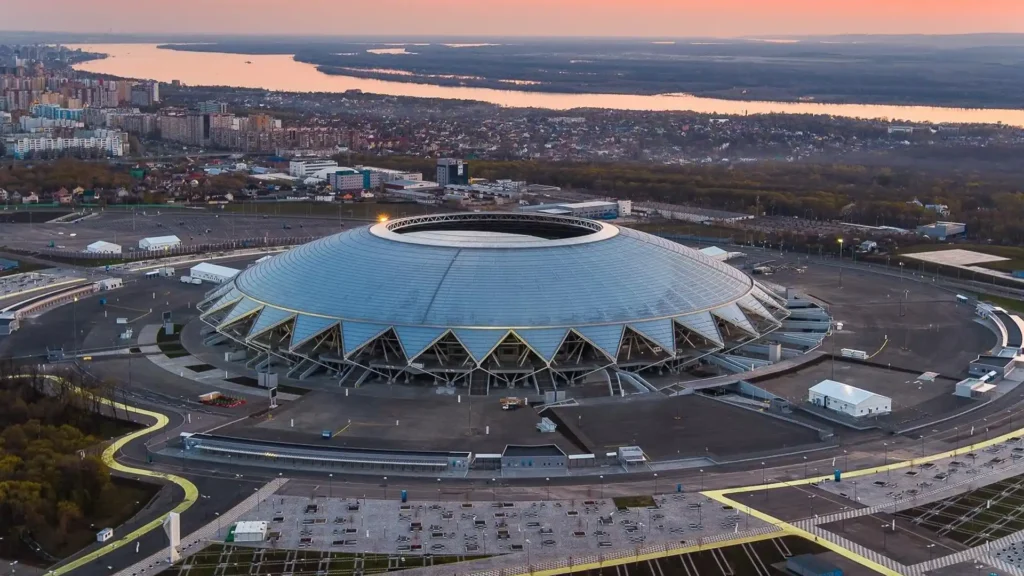
- Status: Active
- Home of Krylia Sovetov Samara.
- Integrated into the local football scene, with steady usage.
🏟️ Ekaterinburg Arena (Ekaterinburg)
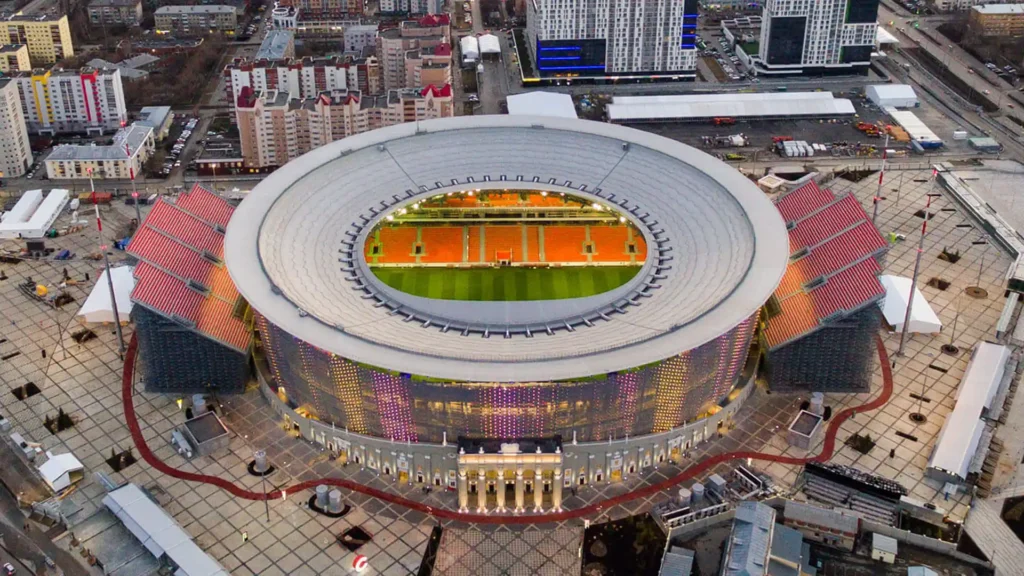
- Status: Moderate
- Home to FC Ural.
- Famous for its temporary “outside stands” in 2018, later removed to scale capacity.
- Still active, though filling it consistently is a challenge.
🏟️ Fisht Stadium (Sochi)
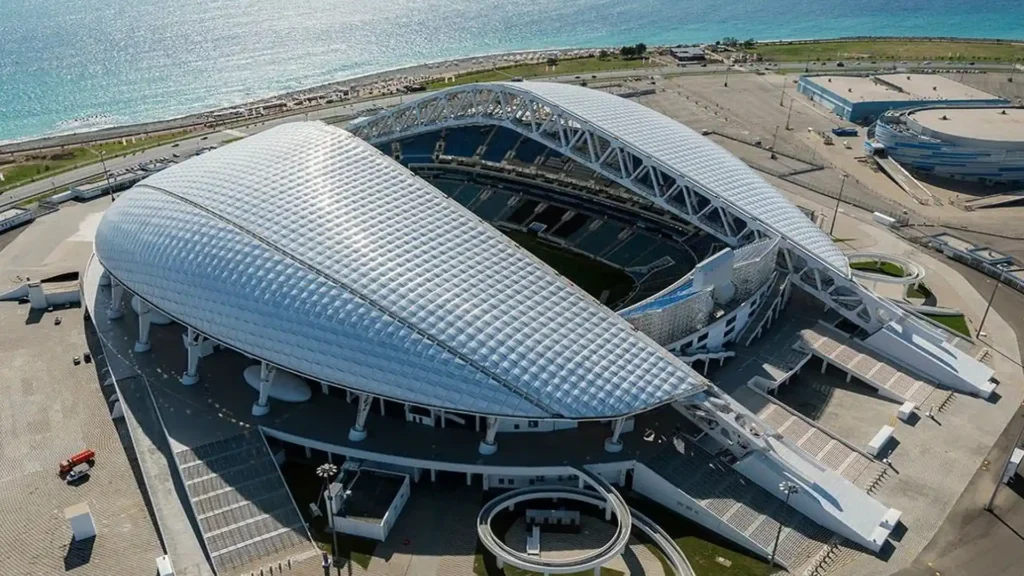
- Status: Mixed
- Converted Olympic venue; hosts PFC Sochi and occasional Russia matches.
- Strong tourist location but limited consistent attendance.
🏟️ Kaliningrad Stadium (Kaliningrad)
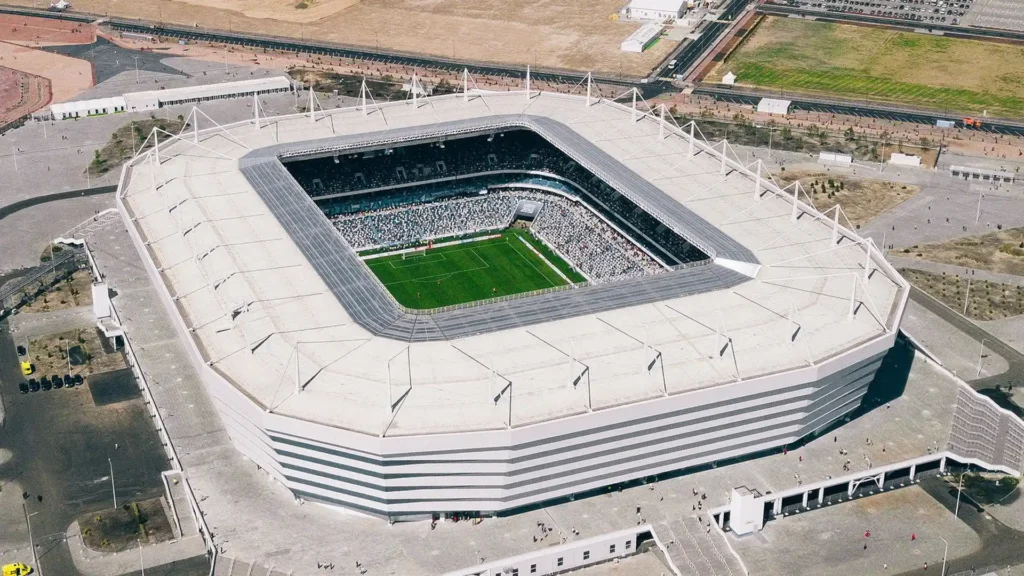
- Status: Moderate
- Home to FC Baltika Kaliningrad.
- Geography makes it harder for large event scheduling.
🏟️ Mordovia Arena (Saransk)
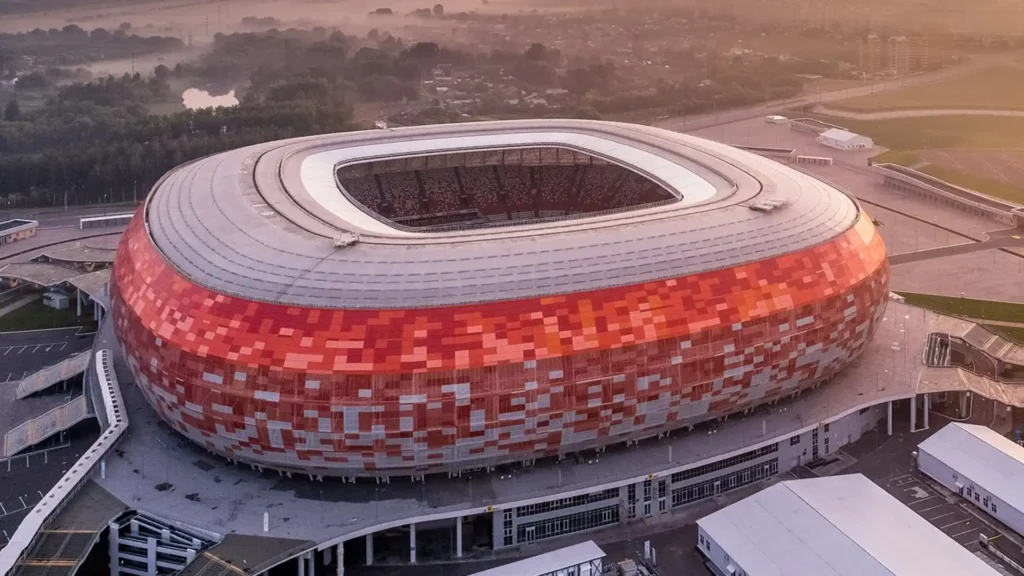
- Status: Struggling
- Built in a small city; FC Mordovia has fluctuated in the lower leagues.
- Faces sustainability issues without a strong anchor tenant.
Winners and Strugglers
✅ Thriving stadiums: Luzhniki, Spartak, Saint Petersburg, Kazan.
👌 Stable but smaller scale: Rostov, Samara, Volgograd, Nizhny Novgorod, Ekaterinburg.
⚠️ Struggling cases: Mordovia Arena, Kaliningrad, and to some extent Fisht (seasonal/irregular use).
The Russia 2018 World Cup left behind impressive infrastructure, but not all venues are equally successful.
The clear lesson mirrors other World Cup hosts:
- Stadiums tied to big clubs and located in major cities thrive.
- Remote or smaller-city venues risk becoming white elephants.
- Diversification (concerts, events, multiple sports) is essential to long-term survival.
Russia’s 2018 stadiums highlight both the potential and pitfalls of mega-event infrastructure.

